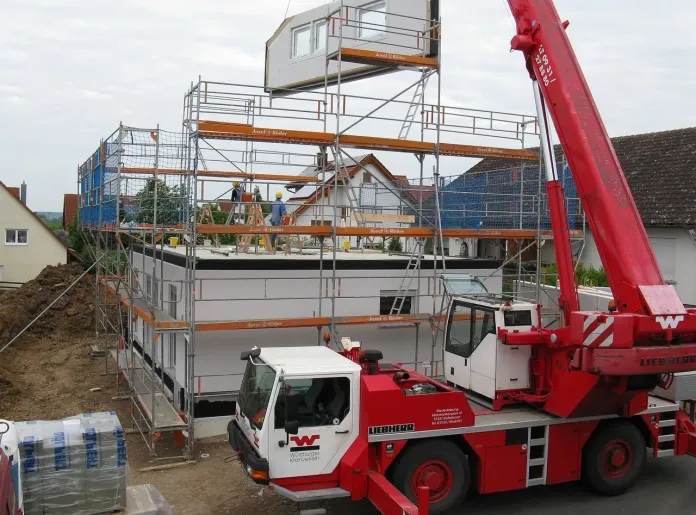Electrical Prefabrication: The Future of Construction and the Benefits It Brings!
Rise of Electrical Prefabrication

The construction industry is transforming in a big way thanks to the introduction of electrical prefabrication. This innovative construction approach is revolutionizing the way we build and stands to benefit many aspects of the construction industry. Electrical prefabrication has the potential to improve efficiency, reduce costs, and provide excellent safety on the job site. It also has the potential to change the way the construction industry is organized and operated. In this article, we will explore the concept of electrical prefabrication, its benefits, and how it is transforming the construction industry. This is an exciting time for the construction industry, and electrical prefabrication has become the key to unlocking its potential and improving the way we build.
What is electrical prefabrication?
Electrical prefabrication is the process of manufacturing electrical components in a controlled environment away from the construction site. Prefabrication is used to reduce lead times, improve efficiency, and increase safety on the job site. These electrical components can be a part of a larger system, such as a control system, or a stand-alone item, like an electrical distribution panel. While electrical prefabrication has been used in other industries for years, it has only recently been adapted to the construction sector. Electrical prefabrication can be used on any project and in all construction phases. The process begins with creating a detailed electrical design that is verified to ensure all the components and systems fit together correctly. This design is then converted into a 3D model of the electrical components used. This can be done with the help of a BIM service provider. Once the design is verified, and all parts are ready, the electrical components are manufactured and shipped to the job site.
Benefits of electrical prefabrication
While electrical prefabrication has many benefits, one of the most obvious is reduced lead times. The prefabrication process allows the electrical contractor to produce components and systems ahead of time, which can greatly reduce the installation time. If a project has a tight deadline, electrical prefabrication can be used to reduce the risk of not meeting that deadline and help ensure the project is completed on time. Electrical prefabrication also provides a safer work environment for all parties involved. This is due to several factors, including the fact that the installed components are not live, no materials are being transported on the job site, and work can be done indoors where weather conditions do not pose a risk. Electrical prefabrication also has the potential to reduce overall construction costs. This is due to a combination of factors, including reduced lead times, increased efficiency, and the fact that all materials required for the job are already on site. Electrical prefabrication is also a more environmentally friendly process and can help to reduce pollution on the job site.
How electrical prefabrication improves efficiency
A major benefit of electrical prefabrication is that it provides an efficient and streamlined workflow on the job site. This begins with the prefabricated electrical components being installed as soon as they are delivered to the job site. This allows for a smooth handover from the electrical contractors to the builders. Electrical prefabrication also allows for quicker ordering of materials, which can help minimize delays. Electrical prefabrication can also increase safety on the job site by eliminating the need for some field adjustments. This is due to the fact that all components are fully tested before being installed. This means that any adjustments needed can be done in a controlled environment without the risk of someone getting injured.
How electrical prefabrication reduces costs
One of the most obvious benefits of electrical prefabrication is that it can reduce the cost of materials. This is due to being able to order materials in large batches, which can help increase efficiency and reduce costs. It also allows for a more streamlined procurement process, which can help reduce costs. Electrical prefabrication also helps to reduce the cost associated with labor on the job site. This is because the prefabricated components can be installed as soon as they are delivered to the job site, eliminating the need for time-consuming field adjustments. Electrical prefabrication also allows for more efficient use of resources, resulting in a reduced cost for the materials and resources being used. Electrical prefabrication can also help reduce the project’s overall length, saving the client money.
How electrical prefabrication increases safety
Safety is always a top priority in the construction industry, and electrical prefabrication can help increase safety in various ways. This begins with the components being installed not being live, which means they are safe to work with and less likely to cause an accident. It also allows for the safe storage and transportation of materials, reducing the risk of someone getting injured. Electrical prefabrication also helps to increase safety by providing a controlled environment for installation. This can help reduce the possibility of someone being injured due to a loose fitting or misconnected wire. Electrical prefabrication can also increase safety by reducing the need for field adjustments. This can help reduce the possibility of someone being injured due to a loose fitting or misconnected wire.
How electrical prefabrication is changing the construction industry
Electrical prefabrication has the potential to change the entire construction industry. This will happen as the construction industry adopts and adapts the electrical prefabrication process. The first signs of this are the increasing number of electrical contractors who are investing in electrical prefabrication equipment. Electrical contractors can reduce the lead time for electrical work, improve overall productivity, and reduce costs by prefabricating electrical components. Electrical contractors should be able to reduce their lead times by up to 40%, which can help reduce the overall time it takes to complete a project. Electrical prefabrication is also changing the types of projects electrical contractors can complete. Traditionally, electrical work has been tied to construction projects that require a high level of customization and detail. This has meant that electrical contractors have spent the majority of their time on projects that are tied to the construction of buildings. Electrical prefabrication is changing this, however, as it allows electrical contractors to expand their reach and perform work less tied to buildings.
The future of electrical prefabrication
Electrical prefabrication will only continue to grow, and it stands to benefit the entire construction industry. The electrical contractor who can implement the process efficiently and effectively will stand out from the competition, and the industry will evolve to become more specialized. This means that contractors can focus on one particular process area, like electrical installation, to maximize efficiency and provide the best service to their clients. Electrical contractors, however, must ensure they have the proper equipment and expertise to implement electrical prefabrication. They will also have to ensure they are partnering with the right companies that can provide the technology and systems required to implement electrical prefabrication.












